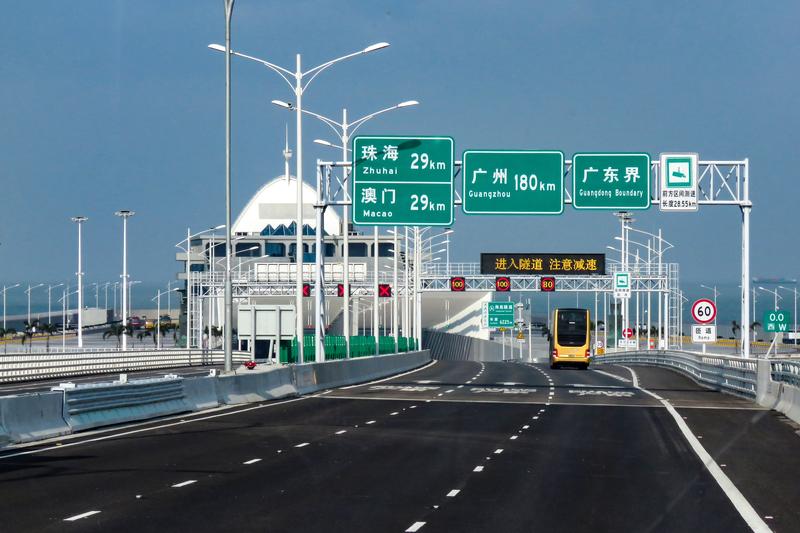Industry experts convinced the ‘worst is over’ with promising growth for the long term. Zhou Mo reports from Shenzhen.

Pundits have cast a vote of confidence for the post-COVID-19 tourism business, saying the mega Bay Area promises the industry the growth potential for the long term in the aftermath of the global coronavirus shock.
For more than a decade, Hong Kong’s tourism market had seen some of its most glorious days as deep-pocketed visitors from the Chinese mainland swarmed the city following the launch of the Individual Visit Scheme in 2003 that offered them greater ease in coming to the “shopping paradise”. It was a “golden decade” for the SAR’s tourism sector, notably the retail, hotel and eatery businesses.
The heyday, however, was clouded by the often-violent protests that erupted last summer. The situation worsened this year with the onset of the pandemic, forcing Hong Kong to impose strict travel curbs, including the closure of most of the city’s entry checkpoints, as well as a ban on visits by non-residents.
According to Hong Kong Tourism Board, total visitor arrivals plunged by 90 percent in the first half of this year compared with the same period a year earlier. The drop in the number of visitors from the mainland was equally shattering — down by 90.3 percent.
However, tour experts believe the “worst may be behind us”, arguing the current sluggishness does not mean that Hong Kong’s long-standing competitiveness in the tourism field has been irreparably undermined. On the contrary, the local tourism business could embrace an even brighter future with the integrated development of the Bay Area.
“It’s hard for Hong Kong, as a single travel destination, to expect further increases in the number of tourists. To attract more people, it has to leverage the strengths of the Bay Area.
Working hand in glove with Guangdong province and Macao, Hong Kong can enrich its tourism products,” China Travel Service (Hong Kong) Chairman Yiu Si-wing, who represents the tourism sector in the Legislative Council, reckoned.
Hong Kong, Macao and Guangdong can complement each other in terms of tourism resources, he said. While Hong Kong is a renowned shopping oasis, Macao serves as a leisure and recreation center. Guangdong, which is home to a variety of cultures, offers a number of historical sites.
“The three sides can give full play to their own characteristics and cooperate with each other in offering diversified tourism products,” Yiu said, adding that tourism could be one of the first sectors that local authorities in the region would promote once the pandemic is gone because it’s one that can generate foreign exchange income and raise the cities’ profile.
Increasing connectivity in the Bay Area lays the groundwork for such cooperation. The Hong Kong-Zhuhai-Macao Bridge and the Guangzhou-Shenzhen-Hong Kong Express Rail Link — two mega transport facilities linking Hong Kong with mainland cities that came into operation in 2018 — make it easier and more convenient for mainland visitors to travel to the city and for international visitors to travel across the region.
Taking off in the Bay Area
Hong Kong should further strengthen its role as a transportation hub, Yiu said.
“The Hong Kong-Zhuhai-Macao Bridge and the Guangzhou-Shenzhen-Hong Kong Express Rail Link have yet to play their biggest role as social unrest erupted in Hong Kong less than a year after they came into operation. They can unleash huge potential for driving tourism in the future,” he said.
Developing other infrastructure projects in the Bay Area also helps to boost Hong Kong tourism by driving more tourists to the region. The Bay Area aims to complete the construction of a world-class cluster of airports by 2025, according to a plan unveiled by the Civil Aviation Administration of China last month.
Five major airports — Hong Kong International Airport, Guangzhou Baiyun International Airport, Shenzhen Bao’an International Airport, Macao International Airport and Zhuhai Jinwan Airport — plus a batch of feeder airports, will make up the airport cluster.
Shrugging off the pandemic’s impact that has brought the aviation industry to a near standstill, airlines are betting big on the Bay Area’s long-term growth.
Greater Bay Airlines — a new mainland-backed carrier — recently applied to Hong Kong’s Civil Aviation Department for an air operator’s certificate. The new airline is believed to be mulling a low-cost model, focusing on flights between China, Southeast Asia and Northeast Asia, according to local media reports, citing people familiar with the matter.
“As an international metropolis, Hong Kong should act as a bridgehead in Bay Area tourism cooperation as it has the highest arrival rate of overseas travelers compared with other cities,” said Song Ding, director of the Tourism and Real Estate Industry Research Center at Shenzhen-based think tank, the China Development Institute.
“Hong Kong and other regional cities used to develop local tourism on their own. Now, under the framework of the Bay Area development, they should think in an integrated way. With the mainland’s rich tourism resources and Hong Kong having a large base of tourist sights, constructive interaction between the two sides will create huge potential.”
But Song noted that the different systems in place between Hong Kong and the mainland remain major stumbling blocks to cooperation. “Greater efforts have to be made to create a model that can be recognized and adopted by both sides,” he said.
Looking ahead, Lo Sui-on, director and honorary chairman of China Travel Service (Hong Kong), believes a stable social environment is vital for the development of Hong Kong’s tourism business.
He’s upbeat that Hong Kong’s tourism industry will stage a quick rebound following the implementation of the National Security Law for the city.
Yiu is equally optimistic, saying the National Security Law for Hong Kong will create a safe environment in the city and propel the tourism sector’s recovery.
Contact the writer at sally@chinadailyhk.com


